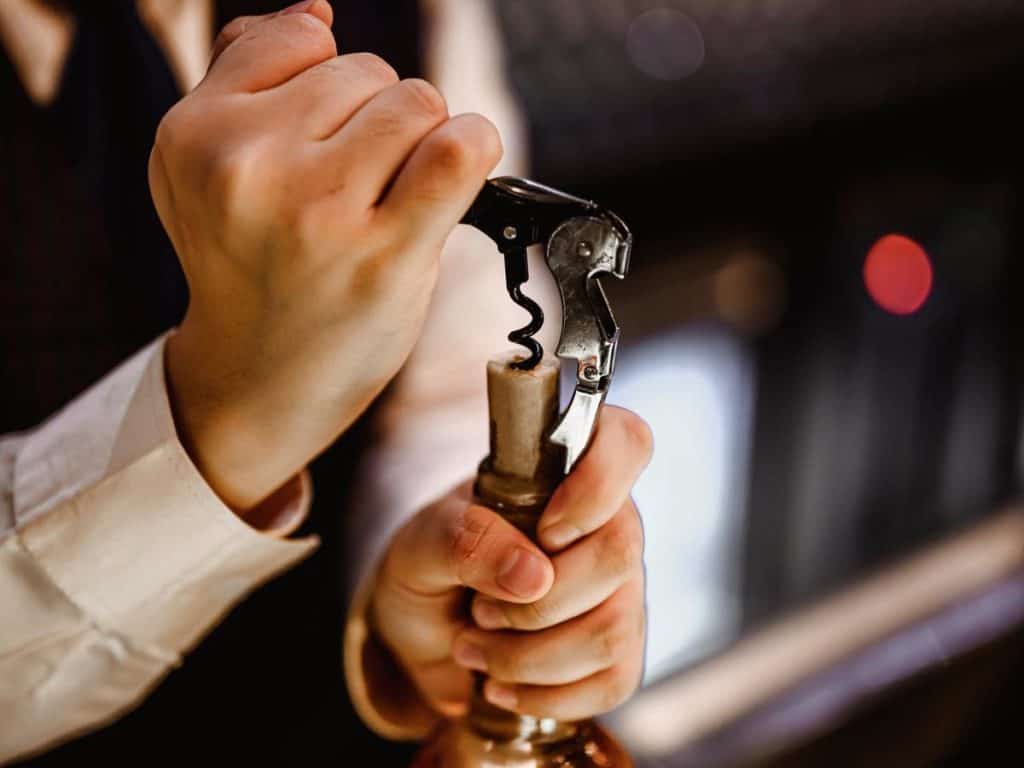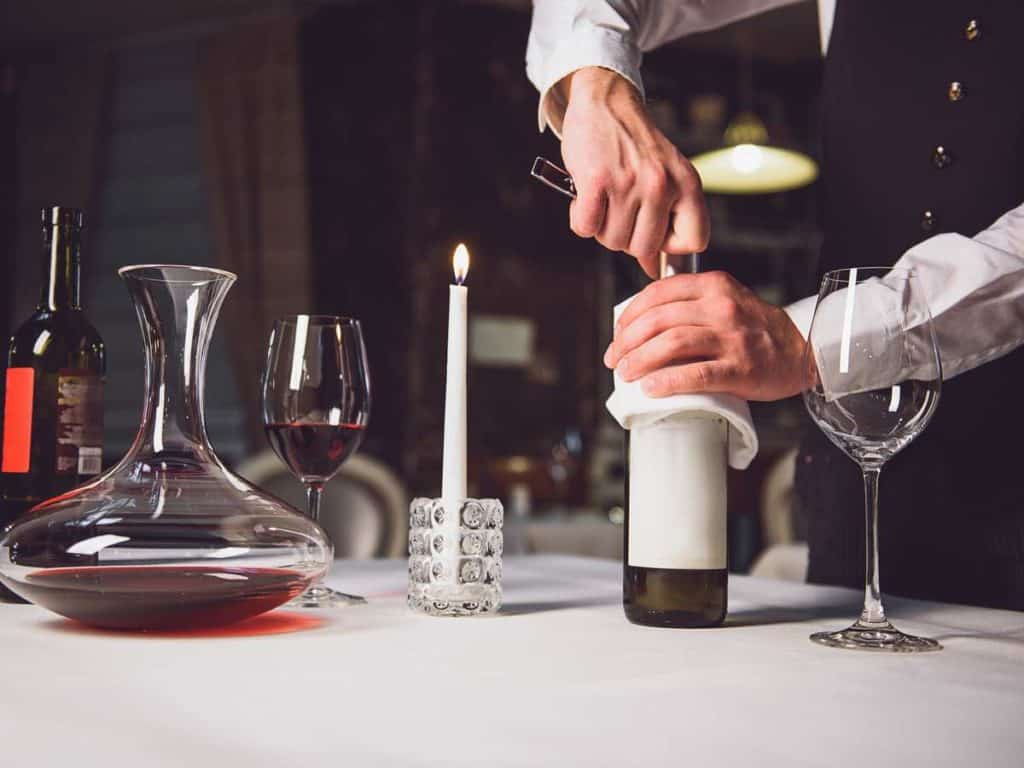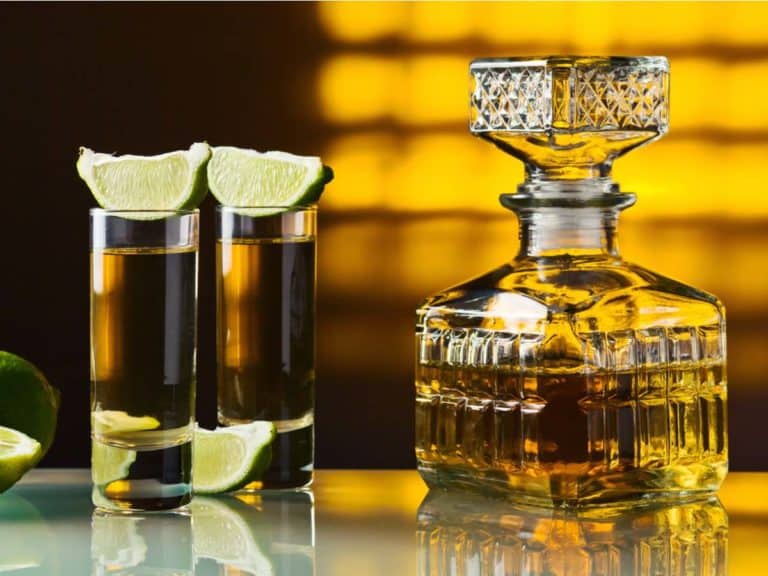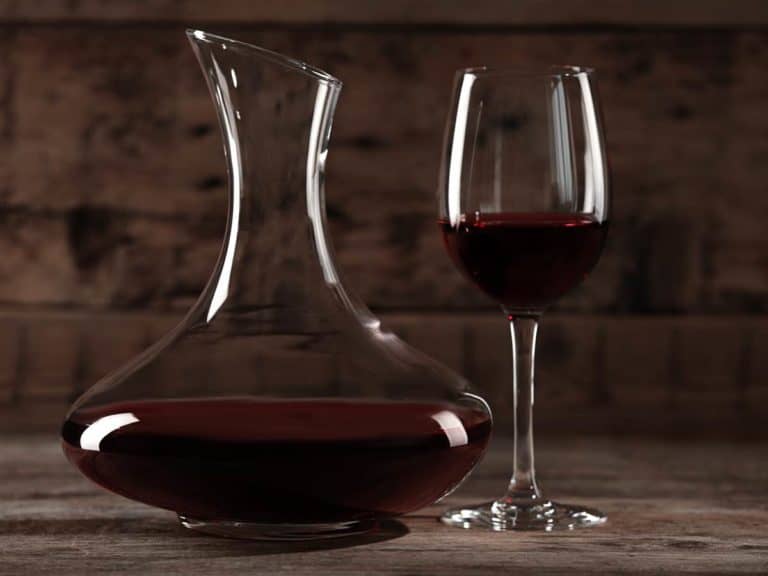How To Double Decant Wine in Six Steps
You may have heard of wine decanting, but did you know that you can double decant wine? Some wines may benefit from decanting a second time to remove additional sediment and allow more oxygen into the wine.
In this article, I’ll detail the steps for properly double decanting wine. I’ll also give you some tips on when to double decant wine and introduce you to some of the best decanters to use.
Wine Double Decanting Steps
Open the Bottle and Pour the Wine Into a Decanter
The process of double decanting is relatively easy to do. The first thing you’ll want to do is open your bottle of wine and pour the wine into the decanter.

Open the Wine Bottle Carefully
When opening the bottle, be careful not to pierce the cork or break any parts of it off. Having to remove cork bits from your wine is the worst!
If you’re opening the bottle with a traditional corkscrew, there’s a proper technique that’ll allow you to entirely remove the cork and open your bottle in no time.
You can watch this YouTube video from Wine Folly for a demonstration on the proper way to open a wine bottle:
Prime the Decanter With a Small Amount of Wine
Next, you’ll want to pour the wine into the decanter. You’ll want to start by pouring a small amount into the decanter and swishing the wine around until all sides are covered. This process helps prime or “season” the vessel and washes out any remaining odors. Pour out your seasoning wine once after this step.
Once you’ve seasoned the vessel, you’re ready to pour the rest of the bottle into the decanter. Pour slowly and carefully so you don’t spill any wine, and stop pouring as soon as you see any sediment in the neck of the bottle.
Allow the Wine To Open Up
After you have the wine in the decanter, you’ll want to let it rest a while to open up. The amount of time it takes to open will depend on the type of wine you have and the age of the wine, though most wine will take anywhere from 30 minutes to more than three hours.
Here’s a list of common wines and how long you should decant each one. Remember that all wines are different, so it’s good to check your wine as it’s decanting.
- Pinot Noir – 30 minutes
- Malbec – 1 hour
- Cabernet Sauvignon – 2 hours
- Merlot – 2 hours
- Barolo – 3.5 hours
While decanting is most often done with red wines, white wines can benefit from decanting under certain conditions.
For example, if the wine has a weird taste, decanting it for about 30 minutes may help with the flavor. It’s essential to know that highly aromatic whites may be hurt by decanting, so be sure that it’s full-bodied if you’re decanting a white wine.
Clean the Wine Bottle
While you wait for the wine to rest in the decanter, you can focus on cleaning the wine bottle. Leaving bits of sediment and closed wine in the bottle will cause it to mix with your opened wine, which may hurt the flavor.
Be Aware of Sediment When Cleaning the Wine Bottle
Start by pouring out the remaining wine and sediment from the bottle. Next, you’ll want to use a funnel to pour water into the bottle and rinse it out. Be sure to swirl the bottle to get any remaining sediment clinging to the side. Repeat this rinsing process until the wine bottle is completely clean.
Related Article: How To Clean a Wine Decanter
Season the Wine Bottle Before Use
After rinsing the bottle, you’ll want to ensure you get all remaining water out so it doesn’t mix with and dilute your wine. To do this, you’ll want to season the bottle much as you did to the decanter in step one.
Pour a small amount of wine from the decanter into the bottle using the funnel. Then swish the wine around to coat the inside of the bottle and pour it out.
Pour the Wine Back Into the Bottle
The last step to double decanting is to pour the wine back into the clean bottle. The best way to do this is to use the funnel and pour slowly.
If you happen to see any sediment in the neck of the decanter, be sure to stop and remove it before you continue pouring. This way, you don’t force the sediment back into the bottle.
After the wine is back in the bottle, it’s ready for you to enjoy!

Reasons To Double Decant Wine
The purpose of decanting wine is to aerate and filter the wine. It helps remove any sediment from the wine that may leave a bad taste on your tongue. It also helps the wine come into contact with the air, which opens the wine up, releasing aroma, softening the flavor, and removing any unpleasant odors.
Decanting wine can help improve the overall drinking experience.
However, some wines could benefit from the double decanting process described above. Here are some examples of wine you may want to double decant:
- Natural wine: Natural wines aren’t taken through any filtration process, meaning they’ll have more sediment in the bottle than your typical filtered wine. The double decanting process will help remove that extra sediment.
- Young wine: Younger red wines often have high tannin levels, which can be overpowering and unpleasant to the drinker. Double decanting young wines will help aerate the wine, allowing oxygen to soften the flavor and make the wine more enjoyable.
- Closed wine: A tight or closed wine that needs to open up quickly can also benefit from double decanting.
Double decanting is also a great way to serve an aerated wine in the original bottle if you want to show your guests what they are drinking while serving them an aromatic and flavorful wine.
Related Article: What Is Hyper Decanting
Different Types of Wine Decanters
Before decanting your wine, you’ll want to choose the right kind of decanter. Decanters come in all shapes and sizes, and some are better suited for certain wines than others.
For example, if you’ll be serving a full-bodied red, you’ll want to choose a decanter with a large base to increase the oxygen exposure to the wine.
Here are a few examples of wine decanters you can get on Amazon.com and when you should use them:
- Godinger Hand-Blown Wine Decanter: This beautiful and affordable hand-blown decanter is perfect for medium-bodied wines such as a merlot or a dolcetto.
- Vintorio GoodGlassware Wide Base Carafe: This decanter is ideal for a full-bodied red with high tannin levels due to its broad base.
- Riedel Curly Decanter: This curly decanter is an excellent choice for those who want a fancier decanter. You can use this with any wine; just check it to ensure it’s ready before serving.
Final Thoughts on Wine Double Decanting
Double decanting wine is an easy way to ensure that you get the least sediment and the best flavor out of your wine. If you have a bottle that would benefit from the double decanting process, follow the steps above. You’ll be sure to have an enjoyable drinking experience!
Read Next: How Long Does Port Last in a Decanter?





